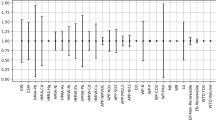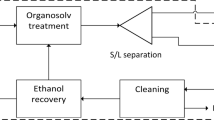Abstract
Purpose
Initiatives like the EU Product Environmental Footprint have been pushing the discussion about the choice of life cycle impact assessment methods. Practitioners often prefer to use established methods for performance tracking, result stability, and consistency reasons. Method developers rather support newly developed methods. As case studies must provide consistent results in order to ensure reliable decision-making support, a systematic approach to qualify decision support maturity of newly developed impact assessment methods is needed.
Methods
A three step approach referring to key aspects for decision maturity was developed which takes the established life cycle impact assessment methods as a benchmark. In the first step, the underlying models of the methods and their respective differences are analyzed to capture the scope and detail of the characterization models. Second, the considered and available elementary flows covered by the methods are identified and compared to reveal consistent coverage, respectively, gaps between alternatives. In the third step, neglected elementary flows are evaluated with regard to their potential impact to the particular impact category. Furthermore, the characterization factors of concurring elementary flows are analyzed for significant differences in their shares. The developed approach was tested for LCIA methods for eutrophication and acidification in Europe.
Results and discussion
A systematic and practical qualification of decision support maturity can be achieved by a three-step approach benchmarking model scope, quantitative and qualitative coverage of elementary flows for new methods with established ones. For the application example, the established CML-IA method was compared with the ReCiPe method and the method of accumulated exceedance. These models vary regarding subdivision of environmental compartments, consideration of fate, as well as regionalization of characterization factors. The amount of covered elementary flows varies significantly as CML-IA covers about 28 more flows within the category acidification and about 35 more flows within the category eutrophication compared to ReCiPe and accumulated exceedance. The significance of all neglected elementary flows for the categories eutrophication and acidification is significant and represents a gap of up to 80 %. Furthermore, it was shown that the shares of some concurring elementary flows differ significantly.
Conclusions
The introduced approach allows the benchmarking of newly developed against established methods based on application-oriented criteria. It was demonstrated that significant differences between the methods exist. To guarantee reliable decision-making support, newly developed methods should not replace established ones until a minimum level of decision support maturity is reached.



Similar content being viewed by others
References
Apsimon H (2014) Acid Rain in Europe: Counting the cost. Routledge
Bach V, Möller F, Finogenova N, et al. (2016) Characterization model to assess ocean acidification within life cycle assessment. Int J Life Cycle Assess. doi:10.1007/s11367-016-1121-x
Baitz M, Albrecht S, Brauner E, et al. (2012) LCA’s theory and practice: like ebony and ivory living in perfect harmony? Int J Life Cycle Assess 18:5–13. doi:10.1007/s11367-012-0476-x
Bare J (2002) developing a consistent decision-making framework by using the U.S. EPA’s TRACI.
Baron JS, Barber M, Adams M et al (2014) The effects of atmospheric nitrogen deposition on terrestrial and freshwater biodiversity. In: nitrogen deposition, critical loads and biodiversity, pp 465–480
Bennett EM, Carpenter SR, Caraco NF (2001) Human impact on erodable phosphorus and eutrophication: a global perspective. Bioscience 51:227–234
Berger M, Warsen J, Krinke S, et al. (2012) Water footprint of European cars: potential environmental impacts of water consumption along automobile life cycles. Environ Sci Technol. doi:10.1021/es2040043
Bergestrom A-K, Jansson M (2006) Atmospheric nitrogen deposition has caused nitrogen enrichment and eutrophication of lakes in the northern hemisphere. Glob Chang Biol 12:635–643
Bombardier Transportation (2011) SPACIUM—environmental product declaration
Bouwman AF, Vuuren DPVAN, Derwent RG, Posch M (2002) A global analysis of acidification and eutrophication of terrestrial ecosystems. Water Air Soil Pollut 141:349–382
Buyle M, Braet J, Audenaert A (2013) Life cycle assessment in the construction sector: a review. Renew Sust Energ Rev 26:379–388
Camargo JA, Alonso A (2006) Ecological and toxicological effects of inorganic nitrogen pollution in aquatic ecosystems: a global assessment. Environ Int 32:831–849
Conley DJ, Paerl HW, Howarth RW et al (2009) Ecology Controlling eutrophication: nitrogen and phosphorus. Science 323:1014–1015
Cui M, Jang M, Lee S, Khim J (2012) Sonochemical oxidation of cyanide using potassium peroxydisulfate as an oxidizing agent. Jpn J Appl Phys 51:07GD13. doi:10.1143/JJAP.51.07GD13
Dunford RW, Donoghue DNM, Burt TP (2012) Forest land cover continues to exacerbate freshwater acidification despite decline in sulphate emissions. Environ Pollut 167:58–69
Dzombak DA, Ghosh RS, Wong-Chong GM (2005) Cyanide in water and soil: chemistry, risk, and management. CRC Press
Elser JJ, Bracken MES, Cleland EE, et al. (2007) Global analysis of nitrogen and phosphorus limitation of primary producers in freshwater, marine and terrestrial ecosystems. Ecol Lett 10:1135–1142
EPA UEPA (2000) Hydrochloric acid (hydrogen chloride). http://www.epa.gov/ttn/atw/hlthef/hydrochl.html
European Commission (2014a) Guidance for the implementation of the EU product environmental footprint (PEF) during the environmental footprint (EF) pilot phase—version 3.3. 1–34
European Commission (2014b) Guidance for the implementation of the EU product environmental footprint (PEF) during the environmental footprint (EF) pilot phase—version 4.0
European Union (2014) Agriculture and acidification. In: EUROSTAT. http://ec.europa.eu/agriculture/envir/report/en/acid_en/report.htm
Finkbeiner M (2013) Product environmental footprint—breakthrough or breakdown for policy implementation of life cycle assessment? Int J Life Cycle Assess 19:266–271
Finstad B, Kroglund F, Bjørn PA et al (2012) Salmon lice-induced mortality of Atlantic salmon postsmolts experiencing episodic acidification and recovery in freshwater. Aquaculture 362–363:193–199
Goedkoop M, Heijungs R, Huijbregts M et al (2009) ReCiPe 2008 A life cycle impact assessment method which comprises harmonised category indicators at the midpoint and the endpoint level report I: characterisation
Guinée JB, Gorrée M, Heijungs R et al (2002) Handbook on life cycle assessment. Operational guide to the ISO standards. I: LCA in perspective. IIa: Guide. IIb: Operational annex. III: Scientific background
Hauschild MZ, Wenzel H (1998) Environmental assessment of products—volume 2: scientific background
Heijungs R, Guinée JB, Huppes G et al (1992a) Environmental life cycle assessment of products: guide and backgrounds (part 1)
Heijungs R, Guinée JB, Huppes G et al (1992b) Environmental life cycle assessment of products—guide and backgrounds (part 2)
Hill MK (2010) Understanding environmental pollution, 3rd edn. Cambridge University Press
Howarth RW, Marino R (2006) Nitrogen as the limiting nutrient for eutrophication in coastal marine ecosystems: evolving views over three decades. Limnol Oceanogr 51:364–376
Huijbregts MAJ (1999) Life-cycle impact assessment of acidifying and eutrophying air pollutants
Institut Bauen und Umwelt e.V. (2009) Regeln für Umwelt-Produktdeklarationen - Baumetalle
ISO 14044 (2006) Environmental management—life cycle assessment—requirements and guidelines (EN ISO 14044:2006)
Itsubo DN, Inaba DA (2012) LIME 2—life-cycle impact assessment method based on endpoint modeling—summary
Jacobson MZ (2004) Air Pollution and Global Warming: History, Science, and Solutions. Cambridge University Press
Joint Research Centre (2011) International Reference Life Cycle Data System (ILCD) Handbook—recommendations for life cycle impact assessment in the European context. Publication Office of the European Union, Luxembourg
Joint Research Centre (2010) International Reference Life Cycle Data System (ILCD) Handbook—analysis of existing environmental impact assessment methodologies for use in life cycle assessment (LCA)
Jolliet O, Bare J, Boulay A-M, et al. (2014) Global guidance on environmental life cycle impact assessment indicators: findings of the scoping phase. Int J Life Cycle Assess 19:962–967
Kikuchi R (2001) Environmental management of sulfur trioxide emission: impact of SO 3 on human health. Environ Manag 27:837–844
Kolzau S, Wiedner C, Rücker J, et al. (2014) Seasonal patterns of nitrogen and phosphorus limitation in four German lakes and the predictability of limitation status from ambient nutrient concentrations. PLoS One 9:e96065. doi:10.1371/journal.pone.0096065
Laget S, Carpentier A (2015) Open letter to the PEF Pilot Project Steering Committee and Technical Advisory Board
Lehmann A, Bach V, Finkbeiner M (2015) Product environmental footprint in policy and market decisions: applicability and impact assessment. Integr Environ Assess Manag 11:417–424
Lehmann A, Bach V, Finkbeiner M (2016) EU product environmental footprint—mid-term review of the pilot phase
Margni M, Gloria T, Bare J et al (2008) Guidance on how to move from current practice to recommended practice in life cycle impact assessment
Martínez-Blanco J, Berger M, Bach V, Finkbeiner M (2013) Promoting the application of water footprints: a tool for the regionalization of generic water inventories,. In: Conference of the American Center of Life Cycle Assessment LCA XIII – Fulfilling LCA’s Promise, October 1–3, Orlando, USA
Meyer B (2013) Sulfur, energy, and environment. Elsevier Ltd, Amsterdam
Mischler JA, Taylor PG, Townsend AR (2014) Nitrogen limitation of pond ecosystems on the plains of eastern Colorado. PLoS One 9:e95757. doi:10.1371/journal.pone.0095757
Nollet LML, De Gelder LSP (2000) Handbook of Water Analysis. CRC Press
OECD O for EC and D (2013) OECD compendium of agri-environmental indicators. OECD Publishing - Verlag
Palani S, Sing LC, Teo SL-M (2014) Atmospheric dry deposition of total phosphorous prediction using neural network
PE International (2014) Harmonization of LCA methodologies for metals—a whitepaper providing guidance for conducting LCAs for metals and metal products
Pecka T, Mill W (2012) Modelling of atmospheric nitrogen deposition effects to polish terrestrial ecosystems for various emission scenarios until the target year 2020. Environ Prot Eng 38:133–143
Poor N, Pribble R, Greening H (2001) Direct wet and dry deposition of ammonia, nitric acid, ammonium and nitrate to the Tampa Bay Estuary, FL, USA. Atmos Environ 35:3947–3955
Posch M, Duan L, Reinds GJ, Zhao Y (2015) Critical loads of nitrogen and sulphur to avert acidification and eutrophication in Europe and China. Landsc Ecol 30:487–499
Posch M, Seppälä J, Hettelingh J-P, et al. (2008) The role of atmospheric dispersion models and ecosystem sensitivity in the determination of characterisation factors for acidifying and eutrophying emissions in LCIA. Int J Life Cycle Assess 13:477–486
Rack M, Valdivia S, Sonnemann G (2013) Life cycle impact assessment—where we are, trends, and next steps: a late report from a UNEP/SETAC life cycle initiative workshop and a few updates from recent developments. Int J Life Cycle Assess 18:1413–1420
Seinfeld JH, Pandis SN (2006) Atmospheric chemistry and physics: from air pollution to climate change, 2nd edn. Wiley, Hoboken
Seppälä J, Posch M, Johansson M, Hettelingh J-P (2006) Country-dependent characterisation factors for acidification and terrestrial eutrophication based on accumulated exceedance as an impact category indicator. Int J Life Cycle Assess 11:403–416
Shinn C, Marco A, Serrano L (2013) Influence of low levels of water salinity on toxicity of nitrite to anuran larvae. Chemosphere 92:1154–1160
Struijs J, Beusen A, Jaarsveld H, Huijbregts M (2008) Eutrophication. pp 59–67
Trochine C, Guerrieri ME, Liboriussen L, et al. (2014) Effects of nutrient loading, temperature regime and grazing pressure on nutrient limitation of periphyton in experimental ponds. Freshw Biol 59:905–917
Tylenda C (2003) Toxicological profile for fluorides, hydrogen fluoride, and fluorine
Tyrell JA (2014) Fundamentals of industrial chemistry: pharmaceuticals, polymers, and business. John Wiley & Sons
van Zelm R, Huijbregts MAJ, van Jaarsveld HA, et al. (2007) Time horizon dependent characterization factors for acidification in life-cycle assessment based on forest plant species occurrence in Europe. Environ Sci Technol 41:922–927
World Health Organization (2006) Air quality guidelines, global update 2005: particulate matter, ozone, nitrogen dioxide and sulfur dioxide
Wright DA, Welbourn P (2002) Environ Toxicol Cambridge University Press
Wright RF, Helliwell R, Hruska J et al (2011) Impacts of air pollution on freshwater acidification under future emission reduction scenarios; ICP waters contribution to WGE report
Author information
Authors and Affiliations
Corresponding author
Additional information
Responsible editor: Martin Baitz
Rights and permissions
About this article
Cite this article
Bach, V., Finkbeiner, M. Approach to qualify decision support maturity of new versus established impact assessment methods—demonstrated for the categories acidification and eutrophication. Int J Life Cycle Assess 22, 387–397 (2017). https://doi.org/10.1007/s11367-016-1164-z
Received:
Accepted:
Published:
Issue Date:
DOI: https://doi.org/10.1007/s11367-016-1164-z




